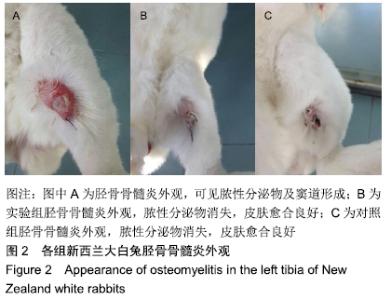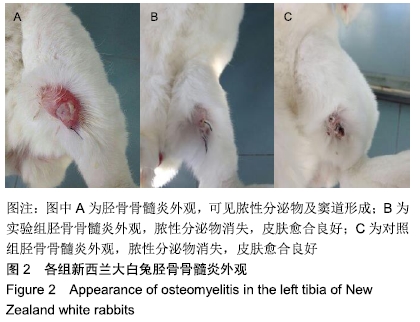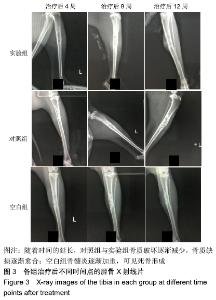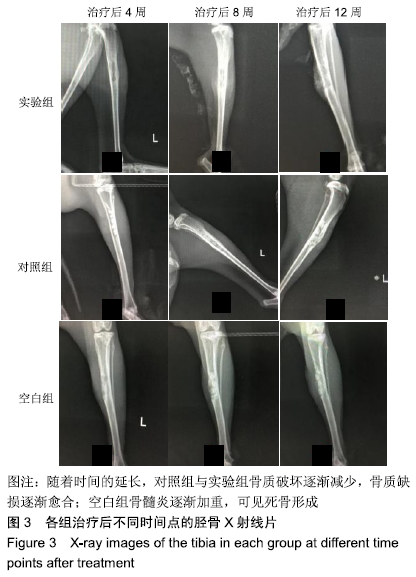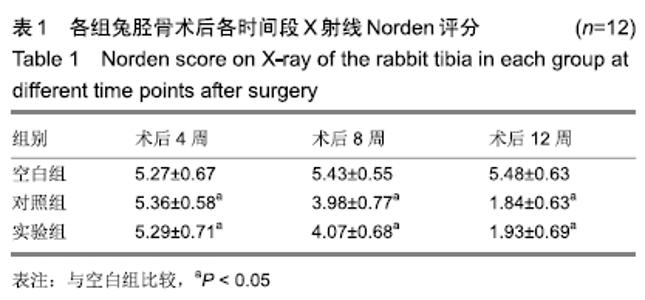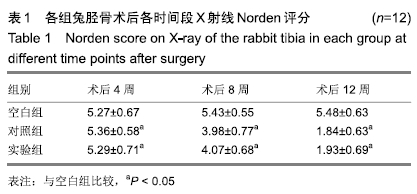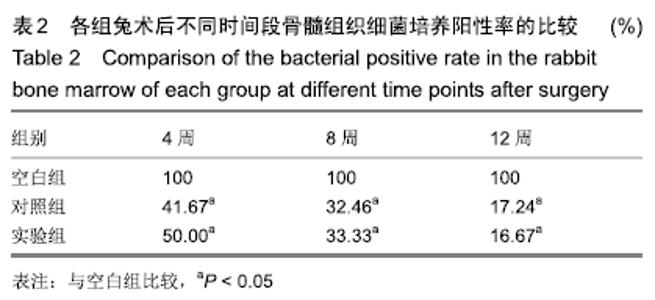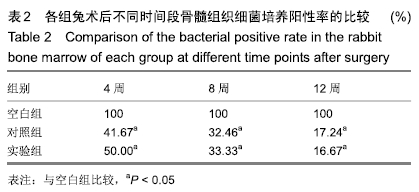[1] SCHMITT SK.Osteomyelitis.Infect Dis Clin North Am.2017; 31(2):325-338.
[2] JERZY K, FRANCIS H.Chronic osteomyelitis bacterial flora,antibiotic sensitivity and treatment challenges.Open Orthop J.2018;30(12):153-163.
[3] SHI P, ZUO Y, LI X, et al.Gentamiei-impregnated chitosan/nanohydmxyapatite/ethyl cellulosemicrospheres granulesforchronic osteomyelitis therapy.J Biomed Mater Res A.2010;93:1020-1031.
[4] SHARMA SK, DAI TH, KHARKWAL GK, et al. Drug Discovery of Antimicrobial Photosensitizers Using Animal Models[J].Curr Pharm Des.2011;17(13):1303-1309.
[5] 滕加文,梁学振,李梁,等.骨髓炎兔胫骨动物模型的建立与评价[J].中国现代药物应用,2017,11(16):194-197
[6] NORDEN CW, MYEROWITZ RL, KELETI E.Experimental osteomyelitis due to staphylococcus aureus or pseudomonas aeruginosa:a radiographic pathological correlative analysis.Br J Exp Pathol.1980;4:451-460.
[7] WANG XH, YU SP, SUN D, et al.Current data on extremities chronic osteomyelitis in southwest China:epidemiology, microbiology and therapeutic consequences.Sci Rep.2017; 7(1):16251.
[8] BISLAND SK, CHIEN C, WILSON BC, et al.Pre-clinical in vitro and in vivo studies to examine the potential use of photodynamic therapy in the treatment of osteomyelitis. Photochem Photobiol Sci.2006;5(1):31-38.
[9] PANTELI M, GIANNOUDIS PV.Chronic osteomyelitis:what the surgeon needs to know.EFORT Open Rev. 2017;1(5): 128-135.
[10] 胥少汀,葛宝丰,徐印坎实用骨科学(4版修订版)[M].郑州:河南科学技术出版社,2018:1562-1567.
[11] 甘先民,侯悦媚,黄乙勇,等.不同成分骨水泥植入对胫骨慢性骨髓炎患者的临床疗效评价[J].中华医院感染学杂志, 2017,27(12): 2763-2766.
[12] 周盼,谢小燕,熊力,等.抗菌光敏剂的分类及研究进展[J].激光生物学报,2017,26(3):193-197.
[13] 彭莹莹,季晓春,王广芬,等.光动力抗菌化学疗法对多药耐药菌及菌膜杀菌效果的研究[J].中华医院感染学杂志, 2018,28(12): 1761-1767.
[14] SPERANDIO FF, HUANG YY, HAMBLIN MR.Antimicrobial photodynamic therapy to kill Gram-negative bacteria.Recent Pat Antiinfect Drug Discov.2013;8(2):108-120.
[15] ORUBA Z, CHOMYSZYN-GAJEWSKA M. Application of photodynamic therapy in dentistry–literature review.Przegl Lek.2016;73(11):857-861.
[16] VON TAPPEINER H JODLBAUER A.On the effect of photody-namic (fluorescent) substances on protozoa and enzymes (in German).Deutsch Arch Klin Med. 1904;39: 427-487.
[17] PARK JH, AHN MY, KIM YC, et al.In vitro and in vivo antimicrobial effect of photodynamic therapy using a highly pure chlorin e6against Staphylococcus aureus Xen29.Biol Pharma Bull.2012;35(4):509-514.
[18] RAGÀS X, SÁNCHEZGARCÍA D, RUIZGONZÁLEZ R, et al. Cationic porphycenes as potential photosensitizers for antimicrobial photodynamictherapy.J Med Chem. 2010;53(21): 7796-803.
[19] ZEINA B, GREENMAN J, CORRY D, et al.Photodynamic effects of antimicrobial photodynamic therapy on keratinocytes in vitro.Br J Dermatol.2002;146:568-573.
[20] SCHASTAK S, ZIGANSHYNA S, GITTER B, et al.Efficient photodynaic therapy against gram-positive and gram-negative bacteria using THPTS,a cationic photosensitizer excited by infrared wavelength.PLoS One. 2010;5:el1674.
[21] CASSIDY CM, DONNELLY RF, TUNNEY MM. Effect of sub-lethal challenge with photodynamic antimicrobial chemotherapy(PACT) on the antibiotic susceptibility of clinical bacterial isolates.J Photochem Photobiol B.2010;99:62-66.
[22] SIMONETTI O, CIRIONI O, ORLANDO F, et al.Effectiveness of antimicrobial photodynamic therapy with a single treatment of RLP068/C1 in an experimental model of Staphylococcus aureus wound infection.Br J Dermatol.2011;164(5):987-995.
[23] GAD F, ZAHRA T, FRANCIS KP, et al.Targeted photodynamic therapy of established soft tissue interactions in mice. Photochem Photobiol Sci.2004;3:451-458.
[24] TARDIVO JP, BAPTISTA MS.Treatment of osteomyelitis in the feet of diabetic patients by photodynamic antimicrobial chemotherapy.Photomed Laser Surg.2009;27:145-150.
[25] 王诗蕾.Ag/ZnO纳米复合材料对口腔S.mutans的作用及机理研究[D].武汉:武汉工程大学,2017.
[26] ETCHEVERRY ME, PASQUALE MA, GARAVAGLIA M. Photodynamic therapy of Hela cell cultures by using LED or laser sources.J Photoch Photobio B.2016;160:271-277.
|
